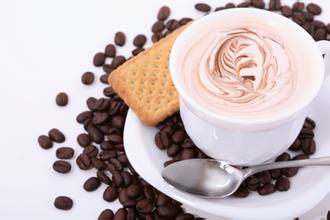Coffee roasting knowledge introduction Coffee roasting coffee with different roasting degree has different roasting degree
Just roasted coffee beans, it is best to leave for 2-5 days, let a large amount of carbon dioxide out of the coffee beans after drinking will be more smooth, Hong Kong Coffee Club will choose an one-way breathable valve aluminum foil bag to preserve coffee beans, can prevent the entry of air to cause oxidation, but also can let carbon dioxide out, to ensure that coffee beans remain fresh in the best condition secret 1: to achieve the highest caramelization-caramelization is an important factor affecting coffee flavor Because raw beans absorb a lot of heat when roasting, there is the first loud sound (1st cracking). At this time, the sugar begins to convert into carbon dioxide, water continues to evaporate, and the aroma of coffee gradually emanates and forms coffee oil. This pyrolysis reaction can last until the second explosion (2nd cracking), but when the second explosion is completed, the temperature of the bean should be lowered immediately and as soon as possible, so that the highest caramelization can be obtained.
Tip 2: minimum carbonization-some ingredients will also be carbonized during the baking process, forming a bad bitter substance, so when you finish the second explosion, stop heating and minimize carbonization at the same time.
Tip 3: pay attention to the change in sound-coffee beans make two bursts during baking, and the first burst is low, indicating that the starch begins to turn into caramel and the water evaporates with carbon dioxide. The second burst sound is more violent and sharp, this is the sound of coffee bean cell fiber fracture, at this time should immediately stop heating, and as soon as possible with cold air to lower the temperature of the bean. The time of the first explosion and the second explosion can be very different, so baking different beans, it is necessary to find out the most suitable baking conditions for this bean.
Tip 4: pay attention to the changes in color and taste-the color of coffee beans will change from green to light brown as it continues to heat up, and then a small amount of oil will show a bright dark brown. At this point, you can no longer bake, otherwise the coffee oil on the surface of the beans will dry and give off a lot of smoke and scorched smell.
To sum up, coffee roasting is a science. The age, density, hardness and moisture content of raw beans will affect the quality of roasted coffee. Even the relative humidity and temperature on the day of roasting can not be ignored.

Important Notice :
前街咖啡 FrontStreet Coffee has moved to new addredd:
FrontStreet Coffee Address: 315,Donghua East Road,GuangZhou
Tel:020 38364473
- Prev

Coffee knowledge introduction to coffee ingredients
Make coffee: Italian coffee: usually brew Italian coffee at home, using a mocha pot invented in Italy, which also uses the principle of vapor pressure to quench coffee (another Watt's apprentice). The mocha pot can make the pressurized vapor pass directly through the coffee powder, let the steam pass through the cell wall of the coffee powder (or Hook's apprentice), and turn the coffee.
- Next

Introduction of Yunnan Coffee Iron pickup Coffee
Catimor: Katim is not pure Arabica blood, it is a hybrid of Timor (which belongs to Robusta) and caturra (a variety of Bobang), so catimor has 25% Robusta blood, and its Robusta blood also determines its taste defects: the aroma is not rich enough, and the overall taste is bitter, and it is prone to astringency and irritation.
Related
- Beginners will see the "Coffee pull flower" guide!
- What is the difference between ice blog purified milk and ordinary milk coffee?
- Why is the Philippines the largest producer of crops in Liberia?
- For coffee extraction, should the fine powder be retained?
- How does extracted espresso fill pressed powder? How much strength does it take to press the powder?
- How to make jasmine cold extract coffee? Is the jasmine + latte good?
- Will this little toy really make the coffee taste better? How does Lily Drip affect coffee extraction?
- Will the action of slapping the filter cup also affect coffee extraction?
- What's the difference between powder-to-water ratio and powder-to-liquid ratio?
- What is the Ethiopian local species? What does it have to do with Heirloom native species?

